130th
The 130th Boston Marathon presented by Bank of America will be held on April 20, 2026.
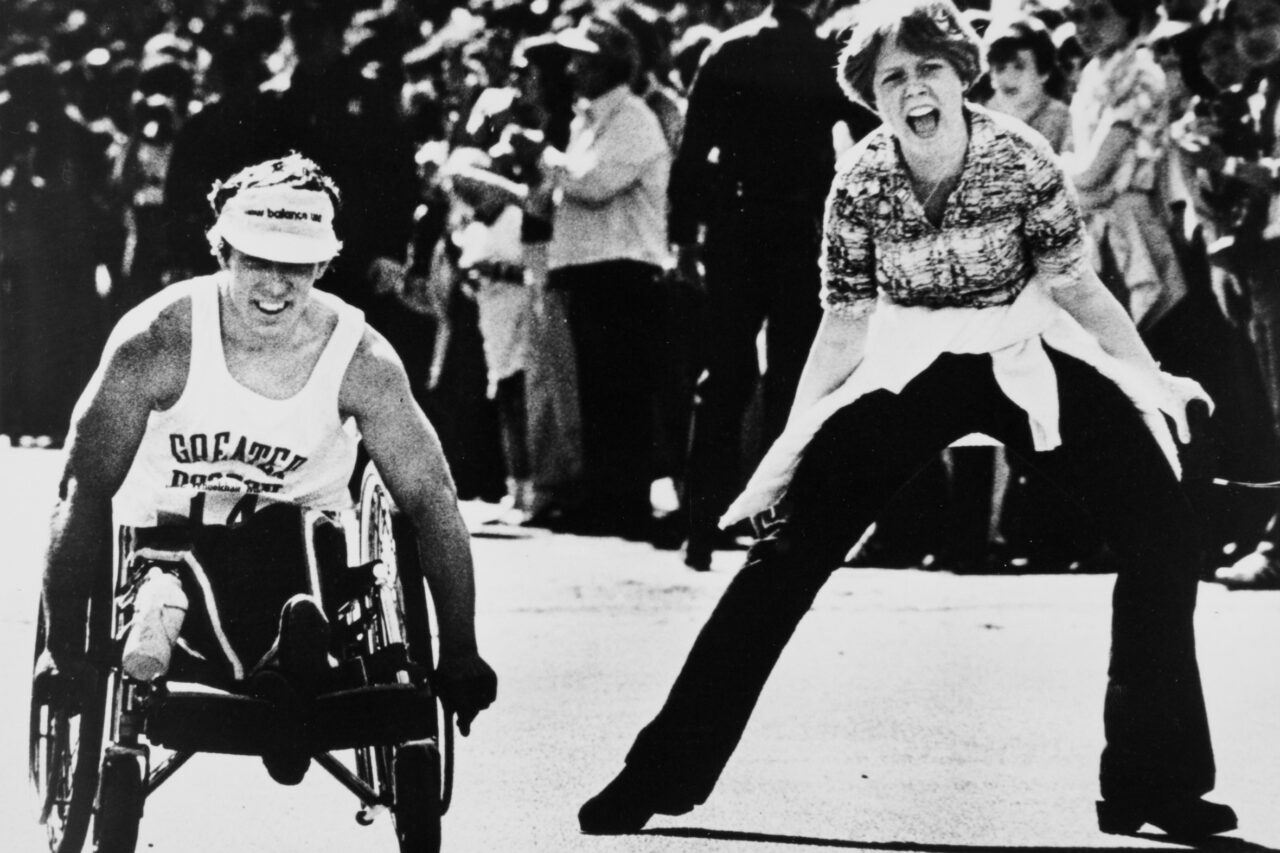
From Hopkinton to Boston, every athlete, volunteer and supporter has helped shape the Boston Marathon.
130th
The 130th Boston Marathon presented by Bank of America will be held on April 20, 2026.
30,000
More than 30,000 entrants from nearly 130 countries and all 50 states are expected to participate in April's race.
$50.4mm
Record fundraising as part of the Bank of America Boston Marathon Official Charity Program in 2025.
500K+
Spectators line the course annually through the eight cities and towns leading to the finish line.
The Beginning
After experiencing the spirit and majesty of the Olympic Marathon, B.A.A. member and inaugural US Olympic Team Manager John Graham was inspired to organize and conduct a marathon in the Boston area. A distance of 24.5 miles from Metcalf’s Mill in Ashland to the Irvington Oval in Boston was eventually selected. On April 19, 1897, John J. McDermott emerged from a 15-member starting field and captured the first B.A.A. Marathon in 2:55:10.
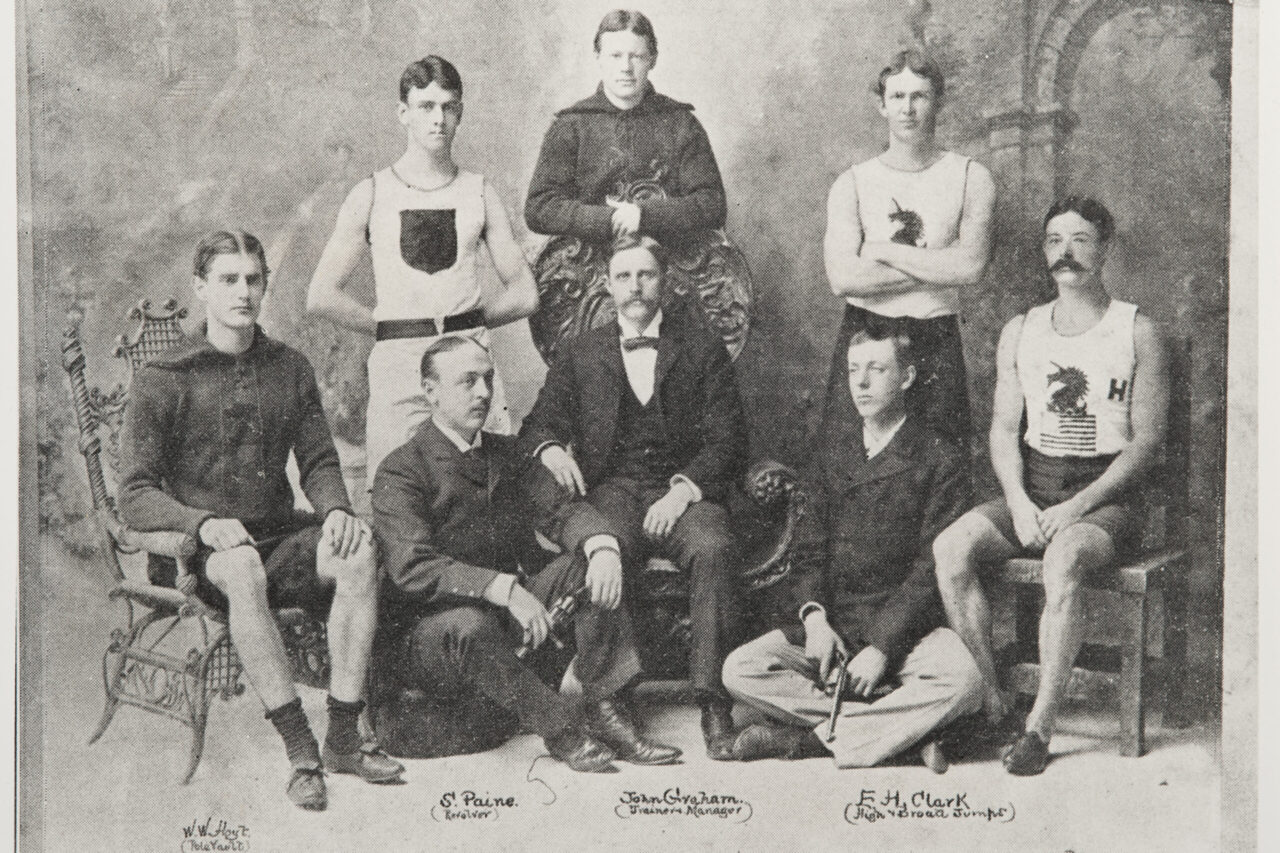
Pioneers
Roberta Gibb was the first woman to run the Boston Marathon. Gibb famously jumped out of the bushes in Hopkinton in 1966 and completed the course in 3:21:40. A year later, Kathrine Switzer became the first woman to complete the race with a bib number, entering as K.V. Switzer. The women’s division was officially established in 1972.
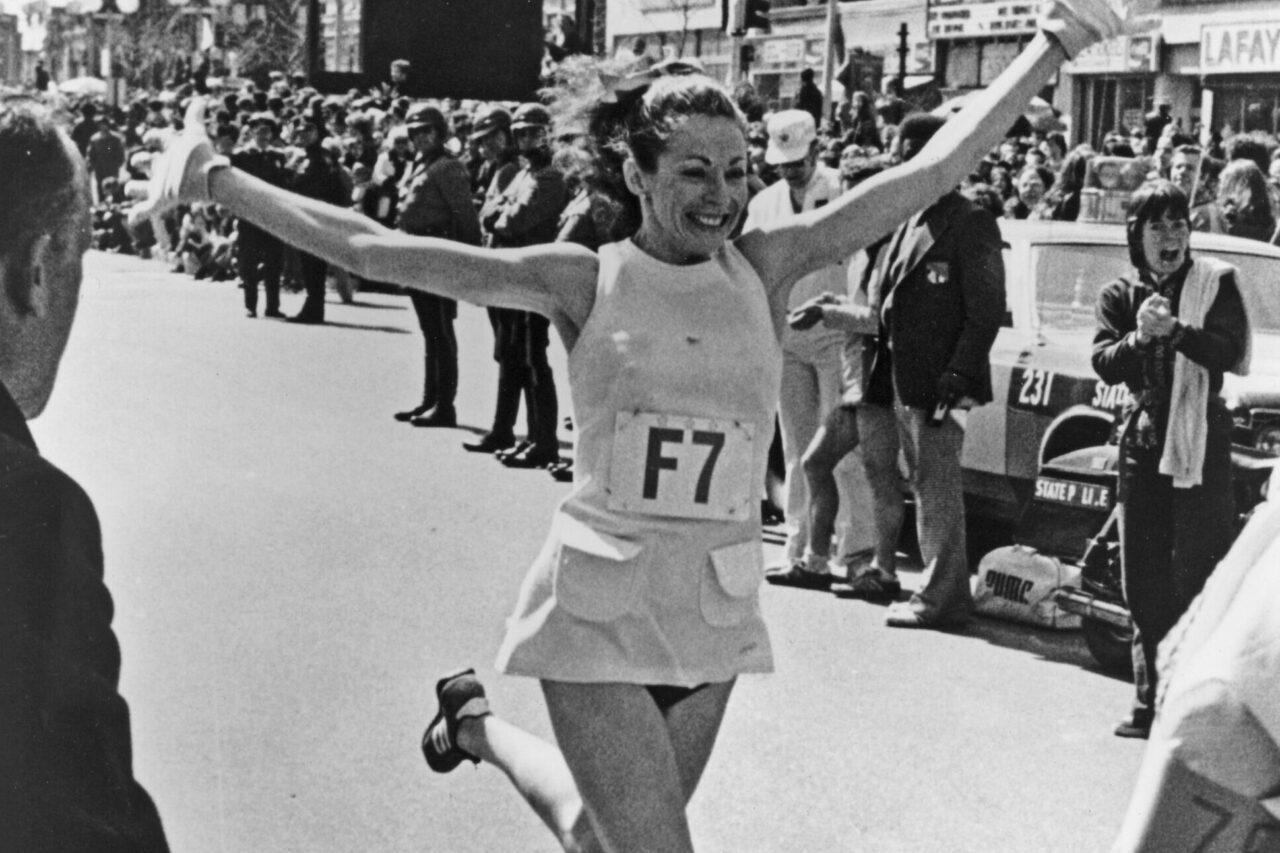
50 Years of Wheelchair Racing
The Boston Marathon became the first major marathon to include a wheelchair division competition when it officially recognized Bob Hall in 1975. With a time of two hours, 58 minutes, he collected on a promise by then Race Director Will Cloney that if he finished in less than three hours, he would receive an official B.A.A. Finisher’s Certificate. American wheelchair competitors Jean Driscoll and Jim Knaub helped to further establish and popularize the division.
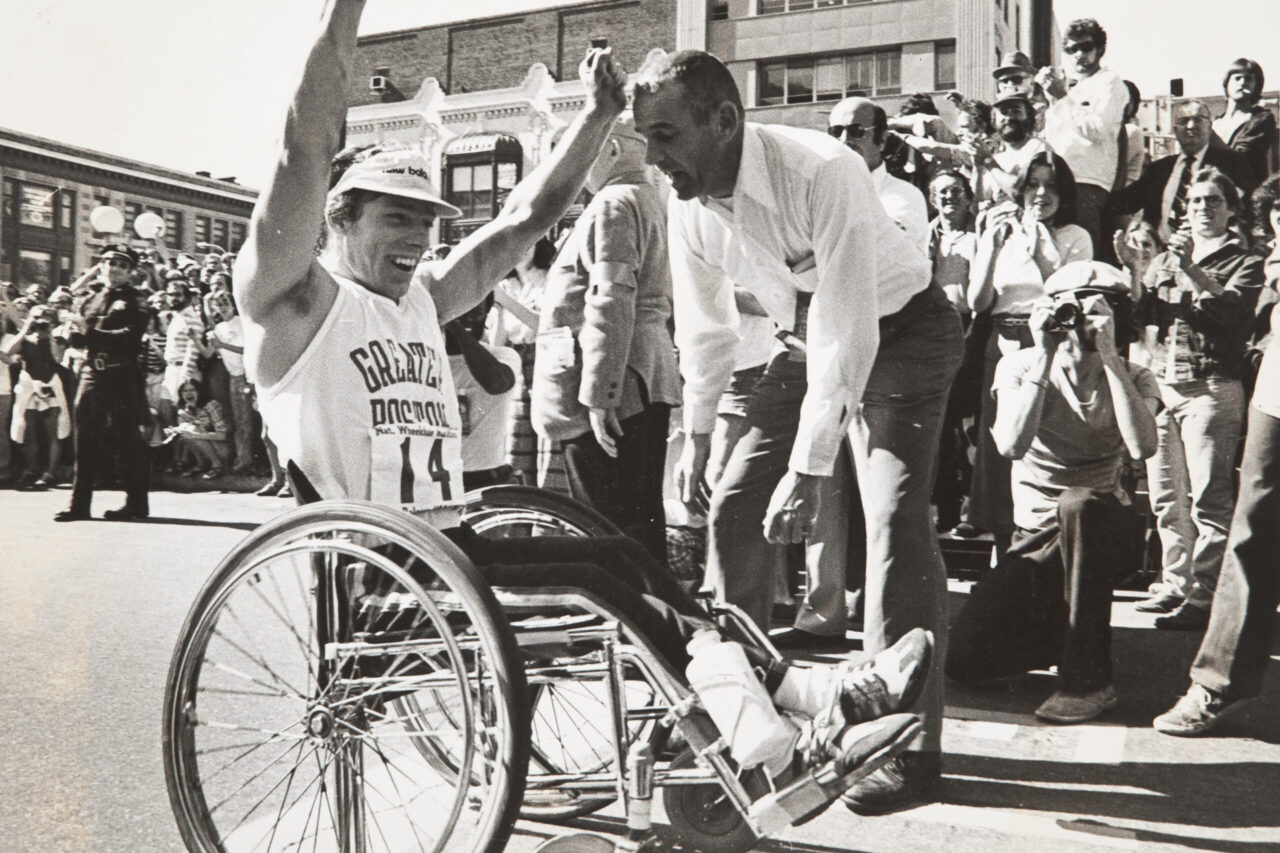
Front of the Field
In 2022, Kenya’s Peres Jepchirchir became the fourth woman and fifth athlete to win both the Boston Marathon and Olympic Marathon titles. With her Boston win, Jepchirchir became the first athlete in history to win Olympic, Boston, and New York City Marathon titles across their career. Other Boston/Olympic Champions include Fatuma Roba (Ethiopia), Rosa Mota (Portugal), Joan Benoit Samuelson (USA), and Gelindo Bordin (Italy).
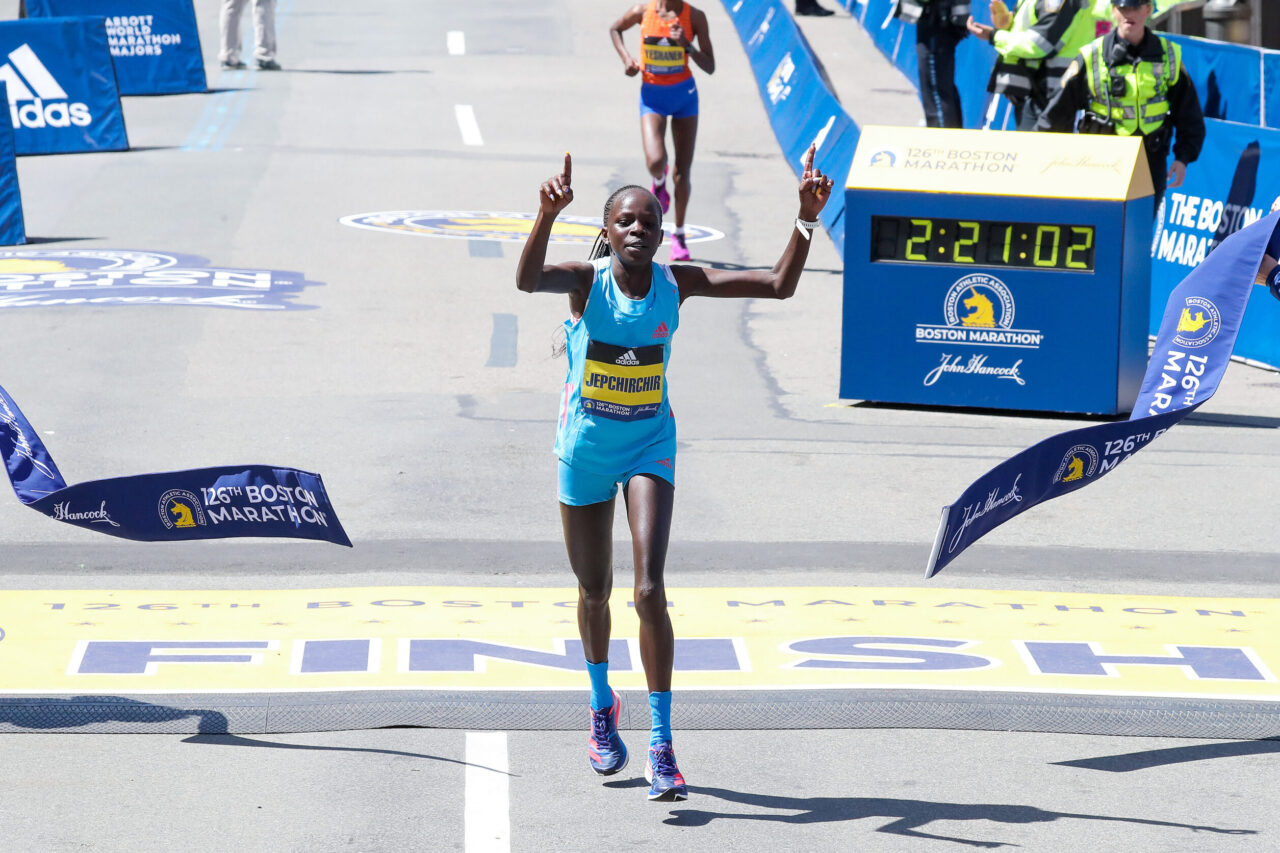
1887
The Boston Athletic Association was established, and construction began soon after on the B.A.A. Clubhouse at the corner of Exeter and Blagden Streets.
1896
The marathon at the first modern Olympic Games in Athens in 1896 served as the inspiration for the B.A.A. Boston Marathon. John Graham, coach and manager of the B.A.A. athletes, was a keen observer of the Marathon-to-Athens Race and returned to Boston with plans to institute a strikingly similar long-distance run the following spring.
1897
The Boston Marathon was originally called the American Marathon and was the final event of the B.A.A. Games. The first running of the Boston Marathon commenced at the site of Metcalf’s Mill in Ashland and finished at the Irvington Oval near Copley Square. John J. McDermott, of New York, emerged from a 15-member starting field to capture the inaugural Boston Marathon.
1911
The legendary Clarence H. DeMar of Melrose, Massachusetts, won his first of seven Boston Marathon titles. However, on the advice of medical experts, DeMar initially “retired” from the sport following his first title. He later won six titles between 1922 and 1930, including three consecutive titles from 1922 through 1924. DeMar was 41 years old when he won his final title in 1930.
1918
Due to American involvement in World War I, the traditional Patriots’ Day race underwent a change of format but preserved its perennial nature. A 10-man military relay race was contested on the course, and the team from Camp Devens in Ayer, Massachusetts, bested the field in 2:24:53.
1924
The course was lengthened to 26 miles, 385 yards to conform to the Olympic standard, and the starting line was moved west from Ashland to Hopkinton.
1928
John A. Kelley made his Boston Marathon debut. Kelley, who won the race in 1935 and again in 1945, posted the record for most Boston Marathons started (61) and finished (58). His final race came in 1992 at the age of 84. Meanwhile, Clarence H. DeMar captured his second straight title.
1936
The last of Newton’s hills was given the nickname “Heartbreak Hill” by Boston Globe reporter Jerry Nason. When John A. Kelley caught eventual champion Ellison “Tarzan” Brown on the Newton hills, Kelley made a friendly gesture of tapping Brown on the shoulder. Brown responded by regaining the lead on the final hill, and as Nason reported, “breaking Kelley’s heart.”
1947
For the first time in the history of the men’s open race, a world best was established at the Boston Marathon when Korean Yun Bok Suh turned in a 2:25:39 performance.
1957
John J. Kelley became the first and currently lone B.A.A. club member to win the Boston Marathon. In addition, from 1946 to 1967, Kelley was the only American to win the race.
1966
Although not an official entrant, Roberta “Bobbi” Gibb became the first woman to run the Boston Marathon. Joining the starting field shortly after the gun had been fired, Gibb finished the race in 3:21:40 to place 126th overall. Gibb again claimed the “unofficial” title in 1967 and 1968.
1967
By signing her entry form “K. V. Switzer,” Kathrine Switzer became the first woman to receive a number in the Boston Marathon. By her own estimate, Switzer finished in 4:20:00. In 2017, Switzer returned to Boston and ran on the 50th anniversary of her memorable 1967 race, finishing in 4:44:31. Her bib number 261 was retired in a ceremony on April 18, 2017.
1969
The Boston Marathon has traditionally been held on the holiday commemorating Patriots’ Day. Beginning in 1969, the holiday became officially recognized as the third Monday in April.
1970
Qualifying standards were introduced. The official B.A.A. entry form stated, “A runner must submit the certification…that he has trained sufficiently to finish the course in less than four hours.”
1972
Women were allowed to officially run the Boston Marathon, and Nina Kuscsik emerged from an eight-member field to win the race in 3:10:26.
1975
A trio of stories emerged from this race, as Bill Rodgers collected his first of four titles, Bob Hall became the first officially recognized participant to complete the course in a wheelchair, and Liane Winter of West Germany established a women’s world best of 2:42:24. Hall was granted permission to enter the race provided that he covered the distance in under three hours. Hall finished in 2:58:00, signaling the start of the wheelchair division.
1983
Joan Benoit won her second Boston Marathon in a world best time of 2:22:43. Benoit, who won the inaugural women’s Olympic Marathon the following year, became the first person to win the Boston and Olympic Marathons. Greg A. Meyer, a resident of Massachusetts at the time, won the men’s race.
1986
Through the generous support of principal sponsor John Hancock, prize money was awarded for the first time, and Robert de Castella of Australia earned $60,000 and a Mercedes-Benz for finishing first in a course record time of 2:07:51. On the women’s side, Ingrid Kristiansen of Norway captured her first of two Boston Marathon titles in
2:24:55. She received $39,000 and a Mercedes-Benz. (Kristiansen won her second title in 1989.)
1988
Kenya’s Ibrahim Hussein finished one second ahead of Tanzania’s Juma Ikangaa, and became the first African to win the Boston Marathon, or any other major marathon.
1990
Jean Driscoll of Champaign, Illinois, won her first of seven consecutive wheelchair division races.
1994
World best performances were established in the men’s and women’s wheelchair divisions, while course records fell in the men’s and women’s open divisions. For the fifth consecutive year, Jean Driscoll posted a world best to win the women’s wheelchair division, while Heinz Frei of Switzerland set the men’s world best to mark the 12th time the record had been established at Boston. Cosmas Ndeti of Kenya lowered the course record to 2:07:15, while UtaPippig set the women’s standard at 2:21:45.
1996
The historic 100th running of the Boston Marathon attracted 38,708 entrants (36,748 starters) and had 35,868 official finishers, which stood as the largest field of finishers in the history of the sport until 2004 (New York City: 37,257 starters; 36,544 finishers). Uta Pippig overcame a 30-second deficit and severe dehydration, among other difficulties,
to become the first woman of the official era to win the race three consecutive years.
2000
After seven consecutive victories (1990–96) followed by three years as runner-up (1997–99), Jean Driscoll won an unprecedented eighth title in the wheelchair division, moving her past legendary Hall of Famer Clarence H. DeMar for most all-time victories at Boston. Catherine Ndereba became the first Kenyan woman to win the Boston Marathon; Elijah Lagat, also of Kenya, was first to the finish in the men’s race, marking the 10th consecutive year a runner from his country won the title. Both the men’s and women’s races were the closest in history.
2003
The Boston Marathon qualifying times were adjusted for the first time since 1990, and the maximum field size was set at 20,000 official entrants.
2004
To better showcase the women’s elite field, the B.A.A. implemented a separate start for the top female runners. In a dramatic change to race format, 35 national- and international-caliber women began at 11:31 a.m. (29 minutes before the rest of the field and the traditional noon start). Also, Ernst van Dyk, of South Africa, made history in the wheelchair
division when he won for the fourth consecutive year in a world record time of 1:18:27, and he became the first person to ever crack the 1:20:00 barrier.
2006
In one of the most significant changes in Boston Marathon history, the field was divided into two starting waves, with 10,000 runners beginning at the traditional noon starting time, and the remainder of the runners starting at 12:30 p.m. In addition to the two-wave start, the Marathon for the first time scored the event by net (chip) time. Robert Kipkoech Cheruiyot beat Cosmas Ndeti’s 12-year-old course record by one second, while Rita Jeptoo, Jelena Prokopcuka, and Reiko Tosa provided the women’s division’s closest-ever 1-2-3 finish.
2007
For the second year in a row the start of the race underwent a major change, this time with the start time being rolled back to 10:00 a.m
2010
Robert Kiprono Cheruiyot from Kenya established a new men’s course record by 82 seconds with a time of 2:05:52. In the men’s wheelchair division, Ernst van Dyk of South Africa won in 1:26:53 and became the most successful Boston Marathon competitor of all time, with his ninth title. The race marked 25 years of partnership between principal sponsor John Hancock and the B.A.A. The official charity program surpassed the $100 million mark in 2010.
2011
Geoffrey Mutai from Kenya set a new course record, as well as a new world’s best time of 2:03:02. The top four men all finished under the old course record. Caroline Kilel of Kenya just outlasted Desiree Davila of the United States to win in 2:22:36. The wheelchair division had an emotional element all its own, with both men’s and women’s victories going to Japan — this just after the earthquake that had struck that country. Masazumi Soejima finished ahead of Kurt Fearnley and Ernst van Dyk in a winning time of 1:18:50.
2013
On a glorious day for racing, Ethiopia’s Lelisa Desisa and Kenya’s Rita Jeptoo ran to victories with times of 2:10:22 and 2:26:25, while Hiroyuki Yamamoto (Japan) and Tatyana McFadden (USA) won the wheelchair titles. During the afternoon, as runners were still racing toward the finish line, tragedy struck when two explosions went off in the final stretch of Boylston Street. Responding heroically, medical personnel, volunteers, law enforcement, and spectators quickly came to the aid of the many injured. Tragically, four lives were lost surrounding the explosions and attacks in Boston. In the aftermath of April 15, 2013, runners and citizens from around the globe united as one to celebrate the strength and resiliency of the community. “Boston Strong” became a rallying cry for all to gather around, exemplifying our determination to prevail stronger through adversity.
2014
In a triumphant victory, American Mebrahtom (Meb) Keflezighi crossed the finish first on Boylston Street in a personal best of 2:08:37. Keflezighi was spurred on by the memories of those impacted by the tragic events at the 2013 Boston Marathon, becoming the first American man to win the open race since Greg Meyer in 1983. Rita Jeptoo of Kenya appeared to have ran a course record of 2:18:57 to finish first, though her result was later dismissed in 2016 due to a ruling by the Court of Arbitration for Sport. Thus, Buzunesh Deba was declared champion and the new course record holder thanks to her time of 2:19:59. In the men’s wheelchair division, Ernst van Dyk of South Africa won his 10th Boston Marathon title, while Tatyana McFadden of the United States retained the women’s crown.
2016
Celebrating the 50th anniversary of Roberta “Bobbi” Gibb’s 1966 run to become the first woman to complete the Boston Marathon, officials announced that the era between 1966 and 1971 would no longer be known as the “Unofficial Era.” Rather, this time period would be known as the “Pioneer Era” going forward. As a symbol of appreciation and thanks for her role in the women’s running movement, women’s winner Atsede Baysa gifted her Champion’s Trophy to Gibb. Gibb served as the 2016 Boston Marathon Grand Marshal.
2018
Prevailing in some of the worst weather conditions in race history were American Desiree Linden and Japan’s Yuki Kawauchi. Driving rain and very strong winds made it tough for all participants, yet did not stop Linden from becoming the first U.S. woman in 33 years to win the open division. Kawauchi was the first Japanese men’s champion since 1987. In recognition of the B.A.A.’s Year of Service, a Military Relay team of 16 servicemen and women passed a baton from Hopkinton to Boston in honor of the centennial anniversary of the 1918 Boston Marathon Military Relay.
2020
The 124th Boston Marathon was postponed from its traditional April date and ultimately held as a fully virtual event due to the coronavirus pandemic. Entrants had ten days from September 5–14 to complete 26.2 miles in one continuous run to earn their unicorn medal and be recognized as a Boston Marathon finisher. In total, 16,183 finishers—90% of the field—from 84 countries and all 50 U.S. states finished the Boston Marathon Virtual Experience, bringing the spirit of Boston to neighborhoods around the globe.
2021
The 125th Boston Marathon was the first fall edition of the race, pushed back from its traditional date due to the coronavirus pandemic. For the first time in 910 days, participants took to the roads from Hopkinton to Boston celebrating the triumphant return to in-person road racing. The 2021 event featured the first ever Para Athletics Divsions, and also saw the introduction of an equal $50,000 course record bonus for open and wheelchair divisions. In addition to the in-person race, a Virtual 125th Boston Marathon was held October 8-10 with more than 22,000 finishers from around the world completing the race within their home towns.
2024
On the occasion of Global Running Day, the B.A.A. unveiled a new emblem for the Boston Marathon presented by Bank of America. The Boston Marathon’s iconic unicorn symbol evolved into a forward-facing, athletic unicorn symbolizing the B.A.A.’s running future. “Between our mass participatory events and our support of philanthropic organizations, we aim to spearhead continued growth and enthusiasm around the sport of running while supporting those around us,” said Jack Fleming, B.A.A. President and CEO.